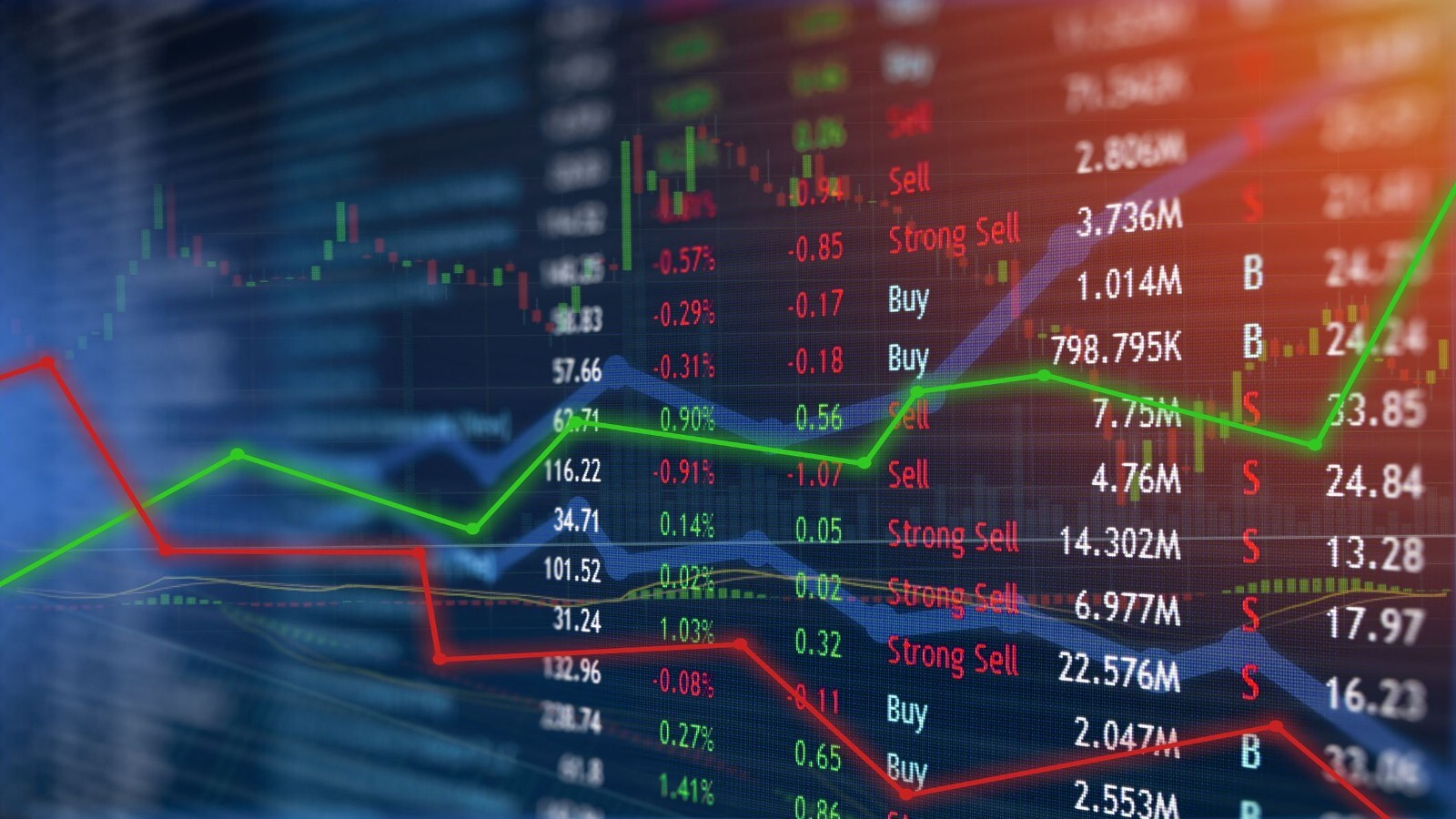A Top Wall Street Strategist’s Bullish Outlook for 2014
Savita Subramanian is head of U.S.

Savita Subramanian is head of U.S. Equity and Quantitative Strategy at BofA Merrill Lynch Global Research.
Kiplinger’s: What’s your market outlook for 2014?
Subramanian: We’re looking for a 10% increase in stock prices. Assuming dividend yields remain in the same ballpark, as they have over the past couple of years, that’s a 12% to 13% total return.
From just $107.88 $24.99 for Kiplinger Personal Finance
Become a smarter, better informed investor. Subscribe from just $107.88 $24.99, plus get up to 4 Special Issues

Sign up for Kiplinger’s Free Newsletters
Profit and prosper with the best of expert advice on investing, taxes, retirement, personal finance and more - straight to your e-mail.
Profit and prosper with the best of expert advice - straight to your e-mail.
The bull market is approaching five years old. What will drive it forward? We get this question a lot. The duration of the bull market doesn’t matter. It’s the contours of economic growth and Federal Reserve policy. We’ve been in a fairly protracted early-stage bull market, which is characterized by easy monetary policy as the Fed tries to stimulate growth. Normally, the early cycle lasts a year or two. This time, it has been longer, and it will continue until the Fed withdraws stimulus. That’s typically the precursor to the middle stage of the bull market. We’re looking for the Fed to begin modestly tapering its bond-buying program in the first quarter.
What happens then? The market typically does quite well during the period of time after the easy money goes away but before the Fed starts to tighten. The market will continue to go up, but the leadership will transition to the most GDP-sensitive areas of the market, such as technology, industrials and energy. Leadership has recently been in stocks that benefit from easy credit early in a recovery, such as financials and companies that sell non-necessities to consumers.
Isn’t the market starting to look expensive? We’ve seen values rise significantly, and the market looks more expensive than it has since the credit crisis. But it’s far from stretched. We recently looked at 15 measures of value, including price relative to earnings and to book value (assets minus liabilities), and stock prices relative to bond yields and commodity prices. By almost every measure, the market looks fairly priced or undervalued relative to history. Also, in an environment in which the economy is starting to accelerate, the market normally looks more expensive because corporate earnings are about to accelerate, too.
Earnings growth has been anemic lately. But over the past several years, a lot of earnings growth has been manufactured by cost-cutting. At a certain point, the economy does better and demand comes back. Now, we’re at the beginning of sales-driven earnings growth.
What themes do you see playing out in the market in 2014? One is the “Great Rotation” out of bonds and into stocks. I would argue that we haven’t seen it yet. It’s been more of a trickle. Over the past few months, we’ve seen investors take a little more risk, but we’re still in fairly skeptical territory.
Where should investors put their money now? Look for areas that do well when the economy picks up and that can withstand a rising interest-rate environment. We especially like large-company stocks in the tech, industrial and energy sectors. We also favor globally diversified companies. Normally, you pay a premium for those stocks versus stocks that just sell to the U.S. Today, global companies are trading at the lowest relative values we’ve seen in a decade. These companies tend to have smoother earnings, better balance sheets and global brands. Companies that fit our themes include General Electric (symbol GE, $27), Microsoft (MSFT, $36), ExxonMobil (XOM, $90), Apple (AAPL, $520) and 3M (MMM, $126).
What would turn you bearish on the market? If economic data were to come in weak and the Fed had to keep easing—we’ve seen this movie before—then our sector calls might not be right, although we think the market overall would continue to rise. I’d also worry if we stayed in corporate-paralysis mode. Companies have been sitting on cash and not spending their capital, and they’re the machines that can generate significant growth. The other worry is that we might get too euphoric on the stock market. We’d turn bearish if we heard everyone and their brother talking about stocks.
Profit and prosper with the best of Kiplinger's advice on investing, taxes, retirement, personal finance and much more. Delivered daily. Enter your email in the box and click Sign Me Up.

Anne Kates Smith brings Wall Street to Main Street, with decades of experience covering investments and personal finance for real people trying to navigate fast-changing markets, preserve financial security or plan for the future. She oversees the magazine's investing coverage, authors Kiplinger’s biannual stock-market outlooks and writes the "Your Mind and Your Money" column, a take on behavioral finance and how investors can get out of their own way. Smith began her journalism career as a writer and columnist for USA Today. Prior to joining Kiplinger, she was a senior editor at U.S. News & World Report and a contributing columnist for TheStreet. Smith is a graduate of St. John's College in Annapolis, Md., the third-oldest college in America.
-
 Is Your Emergency Fund Running Low? Here's How to Bulk It Up
Is Your Emergency Fund Running Low? Here's How to Bulk It UpIf you're struggling right now, you're not alone. Here's how you can identify financial issues, implement a budget and prioritize rebuilding your emergency fund.
-
 Guide to How All-Assets Planning Offers a Better Retirement
Guide to How All-Assets Planning Offers a Better RetirementAn "all-asset" strategy would integrate housing wealth and annuities with traditional investments to generate more income and liquid savings for retirees.
-
 Forget FIRE: Why ‘FILE’ Is the Smarter Move for Child-Free DINKs
Forget FIRE: Why ‘FILE’ Is the Smarter Move for Child-Free DINKsHow shifting from "Retiring Early" to "Living Early" allows child-free adults to enjoy their wealth while they’re still young enough to use it.
-
 Markets Are Quiet Ahead of Fed Day: Stock Market Today
Markets Are Quiet Ahead of Fed Day: Stock Market TodayInvestors, traders and speculators appear to be on hold amid an unusually fraught Fed meeting.
-
 DexCom, GE, SLB: Why Experts Rate These Stocks at Strong Buy
DexCom, GE, SLB: Why Experts Rate These Stocks at Strong BuyWall Street gives these three diverse names Strong Buy recommendations with high potential upside.
-
 The Best Aerospace and Defense ETFs to Buy
The Best Aerospace and Defense ETFs to BuyThe best aerospace and defense ETFs can help investors capitalize on higher defense spending or hedge against the potential of a large-scale conflict.
-
 AI vs the Stock Market: How Did Alphabet, Nike and Industrial Stocks Perform in June?
AI vs the Stock Market: How Did Alphabet, Nike and Industrial Stocks Perform in June?AI is a new tool to help investors analyze data, but can it beat the stock market? Here's how a chatbot's stock picks fared in June.
-
 Stock Market Today: Stocks Rise on Less Deadly Concerns
Stock Market Today: Stocks Rise on Less Deadly ConcernsMarkets are forward-looking mechanisms, and it's good when price action shows there's a future to look forward to.
-
 Stock Market Today: Stocks Soar on China Trade Talk Hopes
Stock Market Today: Stocks Soar on China Trade Talk HopesTreasury Secretary Bessent said current U.S.-China trade relations are unsustainable and signaled hopes for negotiations.
-
 Is GE Aerospace Stock Still a Buy After Earnings?
Is GE Aerospace Stock Still a Buy After Earnings?GE Aerospace stock is higher Thursday after the industrial firm topped analysts' fourth-quarter expectations and issued a strong full-year outlook. Here's what you need to know.
-
 Stock Market Today: Stocks Struggle for Direction as Earnings Roll In
Stock Market Today: Stocks Struggle for Direction as Earnings Roll InWhile General Motors stock soared after earnings, GE Aerospace and Verizon slumped.